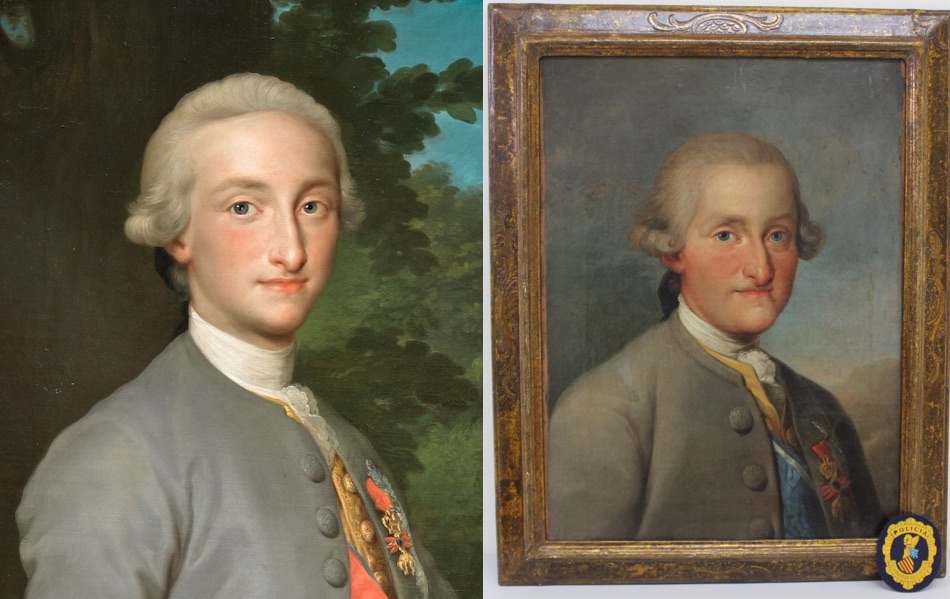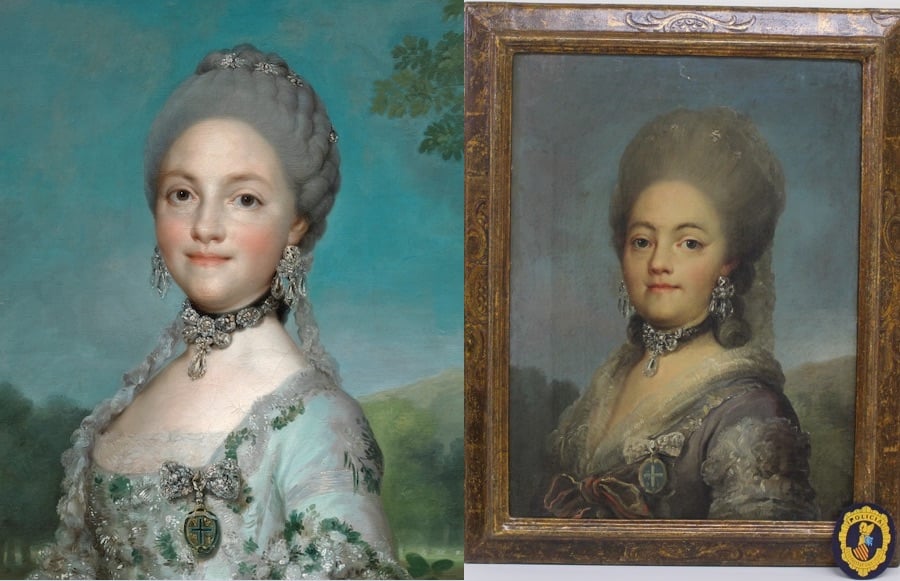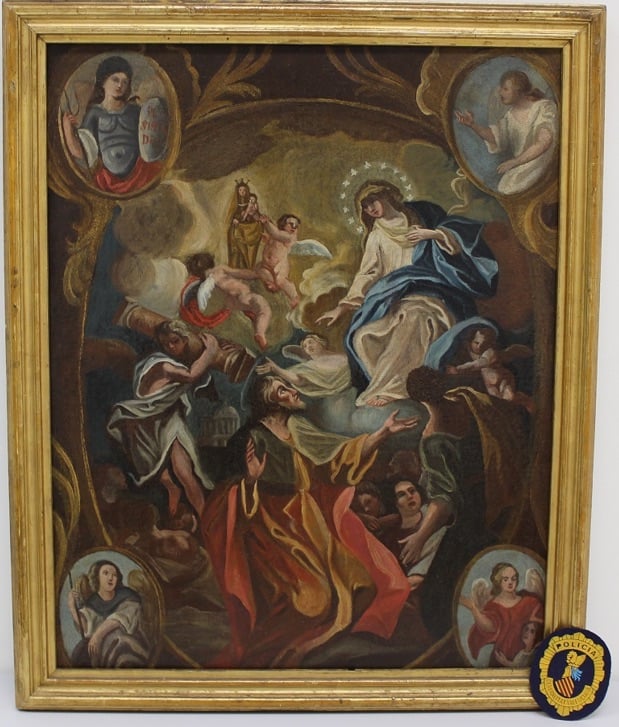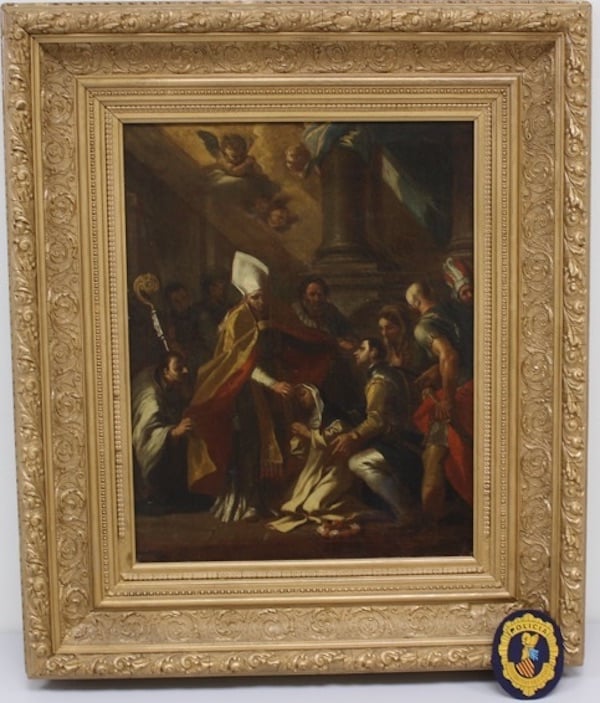Spanish police have seized five fake Old Masters which were being sold for a collective sum of 76 million euros ($84 million). Four of the works were marketed as being the work of Francois Goyaand the fifth as Diego Velasquez.
Investigators learned of the paintings earlier this year when sellers offered them to a number of art dealers, the London Time reported.
Police from the Patrimonio Histórico Division confiscated the works in two separate raids in the coastal city of Valencia – the fake Velázquez on February 8 and the rest a few weeks later.
Authorities are investigating four suspects, who have been questioned but not arrested, CNN reported. The sellers also allegedly produced false provenance documents in hopes of tricking potential collectors into thinking these workers were the genuine item.
The police intervene 5 fake paintings by Goya and Velázquez that sell for 76 million
Thomas Crownhttps://t.co/EvHIyABaB4 via @voz_populi
— Luis Abeledo (@luisabeledo) April 12, 2023
“The most important thing about this crime is that it devalues the work of our creators, in this case, great painters in our history,” said Gabriela Bravo, head of the regional government’s justice department, in a statement, noting that art forgery is the fourth most lucrative type of crime in Spain, after drugs, weapons and prostitution.
Manuela Mena, Goya specialist, and David Gimilio, art technician at the Valencia Fine Arts Museumboth confirmed that the works were forgeries, but it doesn’t seem that hard to tell.
 Anton Raphael Mengs, The Prince of Asturias, future Charles IV (circa 1765), detail. Collection of the Prado Museum, Madrid. A fake recently seized, presented as the work of Francisco Goya.
Anton Raphael Mengs, The Prince of Asturias, future Charles IV (circa 1765), detail. Collection of the Prado Museum, Madrid. A fake recently seized, presented as the work of Francisco Goya.
The most expensive of the five works, at 50 million euros ($55 million), was a copy of Velazquez Portrait of Marianne of Austria, the composition cropped to show only her face. The full-length original was painted for the Spanish Royal Family, and is famous in the collection of the Prado Museum to Madrid.
Two of Goya’s ersatz were also copies of works in the Prado, but by the 18th-century German artist Anton Raphael Mengs. Each priced at 7 million euros ($7.7 million), the works were based on details of Portrait of Charles IV And Portrait of María Luisa de Parma, Princess of Asturias.
 Anton Raphael Mengs, María Luisa of Parma, Princess of Asturias (circa 1765), detail. Collection of the Prado Museum, Madrid. A fake recently seized, presented as the work of Francisco Goya.
Anton Raphael Mengs, María Luisa of Parma, Princess of Asturias (circa 1765), detail. Collection of the Prado Museum, Madrid. A fake recently seized, presented as the work of Francisco Goya.
The 8 million euros Blessing of Santa Rosa de Lima appears to be done in the style of 17th century Italian painters Carlo Maratta Or Pietro Antonio dePietri.
The faux finale, titled Allegory of the Pillar of Zaragoza, “was very poor quality work and not even done by a professional painter”, according to the authorities. It had an asking price of 4 million euros ($4.4 million).
 A recently seized fake, offered as Allegory of the Pillar of Zaragoza by Francisco Goya.
A recently seized fake, offered as Allegory of the Pillar of Zaragoza by Francisco Goya.
All counterfeits would come from the same owner, a Valencian collector who died in 2020.
The Patrimonio Histórico police teamed up with the Museu Valencia de la Illustració i de la Modernitat on an exhibit of 112 counterfeit works of art she has seized in recent years.
 A recently seized fake, offered as Blessing of Santa Rosa de Lima by Francisco Goya. It seems to be done in the style of the 17th century Italian painters Carlo Maratta or Pietro Antonio de Pietri.
A recently seized fake, offered as Blessing of Santa Rosa de Lima by Francisco Goya. It seems to be done in the style of the 17th century Italian painters Carlo Maratta or Pietro Antonio de Pietri.
Newly Identified Counterfeits Will Join Display Soon, Spanish Media Says Vozpopuli. Entitled “False: The Art of Deception or The Art of Deception“, the exhibition opened at the end of last month and will continue until September 3.
Follow Artnet News on Facebook:
Want to stay one step ahead of the art world? Subscribe to our newsletter to receive breaking news, revealing interviews and incisive reviews that move the conversation forward.
